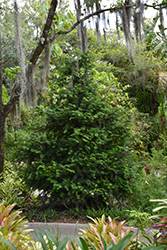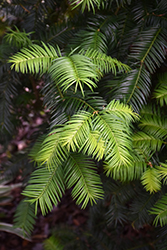It's all about ...
plants

Height: 50 feet
Spread: 40 feet
Sunlight:
![]()
Hardiness Zone: 8a
Other Names: Florida Nutmeg-Yew, Gopher Wood, Stinking Cedar
Description:
A rare and endangered native evergreen conifer that is a member of the yew family; sharp tipped, light green, glossy foliage matures to dark green makes a great landscape accent; slow growing with a loose pyramidal habit; protect from winter winds
Ornamental Features
Florida Torreya has attractive dark green evergreen foliage which emerges light green in spring on a tree with a pyramidal habit of growth. The glossy needles are highly ornamental and remain dark green throughout the winter. The peeling brick red bark is extremely showy and adds significant winter interest.
Landscape Attributes
Florida Torreya is an evergreen tree with a distinctive and refined pyramidal form. It lends an extremely fine and delicate texture to the landscape composition which can make it a great accent feature on this basis alone.
This tree will require occasional maintenance and upkeep, and usually looks its best without pruning, although it will tolerate pruning. Gardeners should be aware of the following characteristic(s) that may warrant special consideration;
- Disease
Florida Torreya is recommended for the following landscape applications;
- Accent
- Vertical Accent
Planting & Growing
Florida Torreya will grow to be about 50 feet tall at maturity, with a spread of 40 feet. It has a low canopy with a typical clearance of 2 feet from the ground, and should not be planted underneath power lines. It grows at a slow rate, and under ideal conditions can be expected to live for 70 years or more.
This tree should only be grown in full sunlight. It does best in average to evenly moist conditions, but will not tolerate standing water. This plant will benefit from an application of bonemeal and/or mycorrhizal fertilizer at the time of planting. It is not particular as to soil type or pH. It is somewhat tolerant of urban pollution. This species is native to parts of North America.
This plant is not reliably hardy in our region, and certain restrictions may apply; contact the store for more information.

